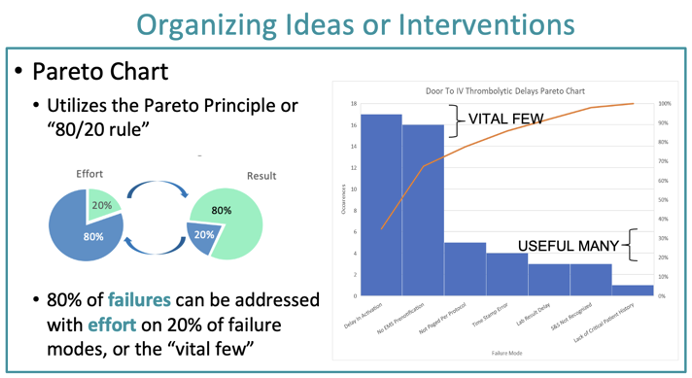Increasing Stroke Program Focus on Social Drivers of Health (SDoH)
In 2020, we published a blog acknowledging the growing understanding of the impact of race and structural inequities on those who suffer stroke and the healthcare systems who care for them. Over the past 4 years, we’ve witnessed a significant growth in research, publications, and presentations focused on this topic. In 2023, The Joint Commission (TJC) added 6 elements of performance to its hospital accreditation standards to address healthcare disparities. https://www.jointcommission.org/-/media/tjc/documents/standards/r3-reports/r3_disparities_july2022-6-20-2022.pdf. The Centers for Medicare and Medicaid Services (CMS) is increasingly collecting more data to advance health equity and, in 2024, will require reporting of two mandatory measures in the Hospital Inpatient Quality Reporting Program to analyze resource use in 5 domains of SDOH. https://www.cms.gov/priorities/health-equity/minority-health/equity-programs/framework. However, it remains unclear how this growing body of research will impact stroke programs and stroke certification standards moving forward.
While efforts to address stroke prevention and acute stroke treatment over the past 20 years resulted in reduction in mortality, studies continue to show that white individuals have appreciated the largest reduction in mortality and minority populations experience the smallest reduction.1 While efforts are underway globally to address structural inequality, studies suggest that efforts over the past decade have failed to close the gap.2 Thought leaders in the area suggest significant efforts are needed to understand the causes of inequity within and outside of healthcare so they can be addressed.3 As certified stroke centers play a key role in the stroke system of care, stroke leaders should be aware of the efforts underway to address structural inequities and determine their role in advancing this work, with or without certification standards prompting them to do so. We’ve identified 3 key publications that address inequities at the micro, meso and macro level of stroke care delivery that may help programs focus their efforts on this space.
The American Heart/Stroke Association recently published a scientific statement on strategies to reduce racial and ethnic inequities in stroke preparedness, care, recovery and risk factor control.1 https://www.ahajournals.org/doi/10.1161/STR.0000000000000437. In addition to outlining the current state of the science, the statement provides a roadmap for health systems to address inequity through actions aimed to improve access to care, decrease barriers to medication adherence and improve care coordination and health education. The statement also describes concrete steps stroke centers and providers may take throughout the continuum of care to identify and decrease inequity.
Finally, Sur et al4 published a comprehensive review on stroke risk factor management through the lens of special groups and populations at risk for health disparities. In addition to discussing common risk factors and addressing how different populations are impacted, the authors also address healthcare access and adherence. They call on clinicians to improve their awareness of disparities related to risk factors, cultural awareness, and evidence-based practice while calling on healthcare systems to improve access to care, implement programs that provide equitable care and target initiatives to individual populations.

Stroke program leaders would benefit from staying up to date on the evolving publications on healthcare disparities in stroke and integrate strategies to address inequities into their program plans. Of note, after review of the impact of homelessness on inpatient resource use, CMS added three ICD-10 diagnosis codes describing homelessness (Z59.01-sheltered, Z59.02-unsheltered and Z59.00-unspecified) to the list of “CCs” (complications and co-morbidities) used in MS-DRG assignment. https://www.cms.gov/newsroom/fact-sheets/fy-2024-hospital-inpatient-prospective-payment-system-ipps-and-long-term-care-hospital-prospective-0 (scroll down to “Social Determinants of Health Diagnosis (SDOH) Codes”)
This, and other social drivers of health coding, along with the additional information required of hospitals accredited by TJC and the measures required by CMS, may result in additional data available to stroke program leaders to plan and evaluate the stroke program and tailor initiatives to populations most affected.
References:
- Towfighi A, Boden-Albala B, Cruz-Flores S, et al. Strategies to Reduce Racial and Ethnic Inequities in Stroke Preparedness, Care, Recovery, and Risk Factor Control: A Scientific Statement From the American Heart Association. Stroke. 2023;54(7):e371-e388. doi:10.1161/STR.0000000000000437
- Hyldgård VB, Søgaard R, Valentin JB, Lange T, Damgaard D, Johnsen SP. Is the socioeconomic inequality in stroke prognosis changing over time and does quality of care play a role?. Eur Stroke J. 2023;8(1):351-360. doi:10.1177/23969873221146591
- Kapral MK. Kenton Award Lecture-Stroke Disparities Research: Learning From the Past, Planning for the Future. Stroke. 2023;54(2):379-385. doi:10.1161/STROKEAHA.122.039562
- Sur NB, Kozberg M, Desvigne-Nickens P, Silversides C, Bushnell C. Improving Stroke Risk Factor Management Focusing on Health Disparities and Knowledge Gaps. Stroke. 2024;55(1):248-258. doi:10.1161/STROKEAHA.122.040449





